Trying to add space to smaller homes is tricky for many reasons. You have less scale to play with, and people in smaller homes tend to have smaller budgets. But some of the smartest spatial reimagining can be seen in bijou builds, and architects’ own homes can offer lots of inspiration in terms of clever space-saving solutions.
Take Diarmaid Brophy, who originally bought his 85sq m (915sq ft) property in Dublin 7 with two friends in the early 2000s. They knocked down a small lean-to kitchen to the rear and added an only marginally larger extension to give them an eat-in living space to the rear. The rationale was that this freed up the front room to be used as a third, equal-sized bedroom.
As he got serious about settling down, he decided to stay put and bought out his friends. He got married and kids arrived. The house now needed to function in a different way. “We got settled in the area,” he says. So instead of moving, he added a first-floor extension of just 8sq m (86sq ft) in 2018. The rear extensions are clad in painted Douglas fir. The house now extends to 99sq m (1,065sq ft) with every centimetre of space designed to function.
“You have to think of every nook and cranny,” he says. “For example, the kitchen is only 3m wide but I compensated by making the countertop extra deep. Instead of the standard 60cm I made it 80cm so you can leave stuff on counters and still have space to work.”
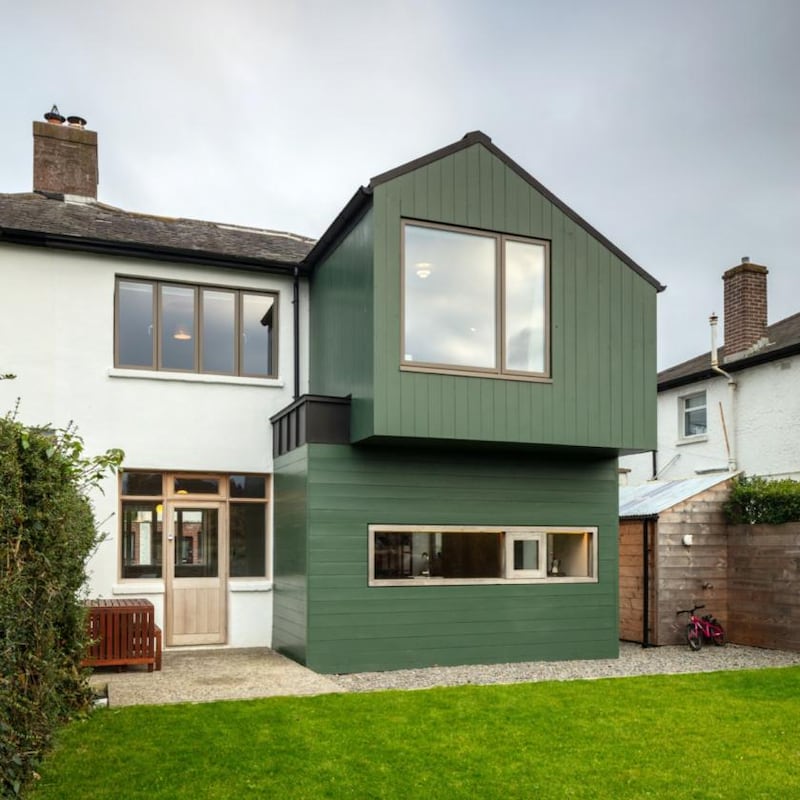

It’s about making the most of the floor area you already have, in order to limit the amount of additional space you need to add, meaning more money can be spent per square metre instead of spreading things too thinly, he says.
This project, the 6sq m (65sq ft) extension at ground level and 8sq m (86sq ft) above, disrupted three rooms; the kitchen/dining room, the box bedroom and bathroom above. To build today, it would cost about €140,000, allowing 20 per cent of the spend for a new fitted kitchen and the bathroom fixtures.
Despite ever-rising building costs he believes that someone can take this very focused approach to aggrandise a small semi by breaking down the budget as €80,000 on the extension, €35,000 on the existing rooms and €25,000 for the new kitchen and bathroom.”
Take a step down
In Killester, architect Gareth Brennan of the practice Brennan Furlong also reimagined his own home by adding 30sq m (323sq ft) of space while completely reworking the layout.
The four-bedroom end-of-terrace home, built as a home for soldiers returning from the first World War in the 1920s, measured about 130sq m (1,400sq ft) and had a converted attic of another 20sq m (215sq ft).
The plot, overlooking a green, sloped down towards the railway embankment. It was south-facing to the rear and not overlooked. But the house didn’t relate to its different levels, he says, so he terraced it internally, so that it stepped down into the garden. By way of extending the footprint, he only added a single room to the back, a sitting room of about 30sq m (323sq ft).
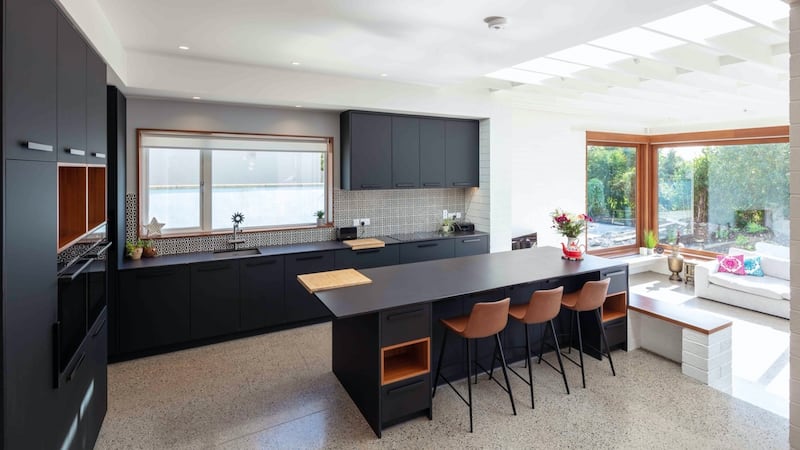
“The house had a wide hall, and I wanted to carry that sense of space through it.”
He rebuilt the porch to the front and put the front door to the side. Now when you enter, there is a shower room to the left with a large utility to its rear.
The dining room is to the back and enjoys its original 9ft-high ceilings, but by stepping the kitchen down a level of about 45cm, a distance of three steps, he gained an enormous sense of space.
Here the anthracite design was fabricated by Mooney Kitchens with joinery throughout by Sheridan Joinery and concrete floors by Unicrete.
The sitting room is down one more level and housed in a single-storey extension that is surrounded by garden. The ground floor now measures about 95sq m (1,023sq ft). Brennan used contractor Devine Building. He estimates it would cost €3,000-€3,500 per sq metre to do something similar today, so the ground floor would cost €285,000-€332,500.
Add a storey
Light and the use of space are essential elements of the design process, says Ciara Murray, one half of Newmark Architects, whose most recent project refurbished and extended a home that had belonged to their client's grandmother.
The single-storey cottage of 80sq m (861sq ft) in Portobello has now been turned into a swish two-storey home of 126sq m (1,356sq ft), with a clever addition that wraps around the garden.
They knocked down 11sq m (118sq ft) but added 57sq m (613sq ft). While they left the rooms to the front very much as they were, they took a large slice of the relatively sizeable side and back garden in their extension works, says Murray.
The practice has a different ethos to many in that it is weather pragmatic.
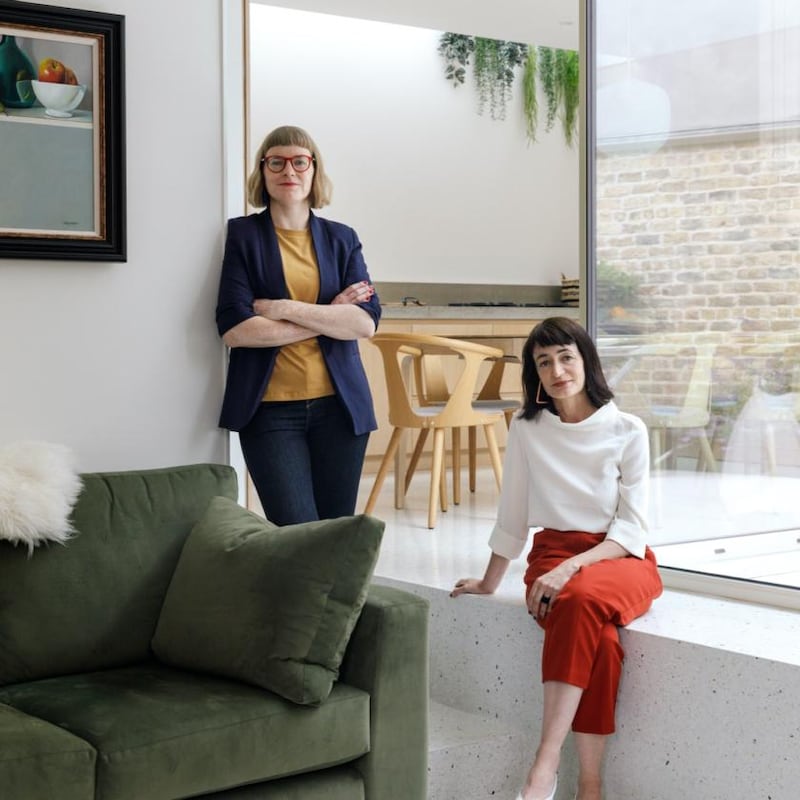
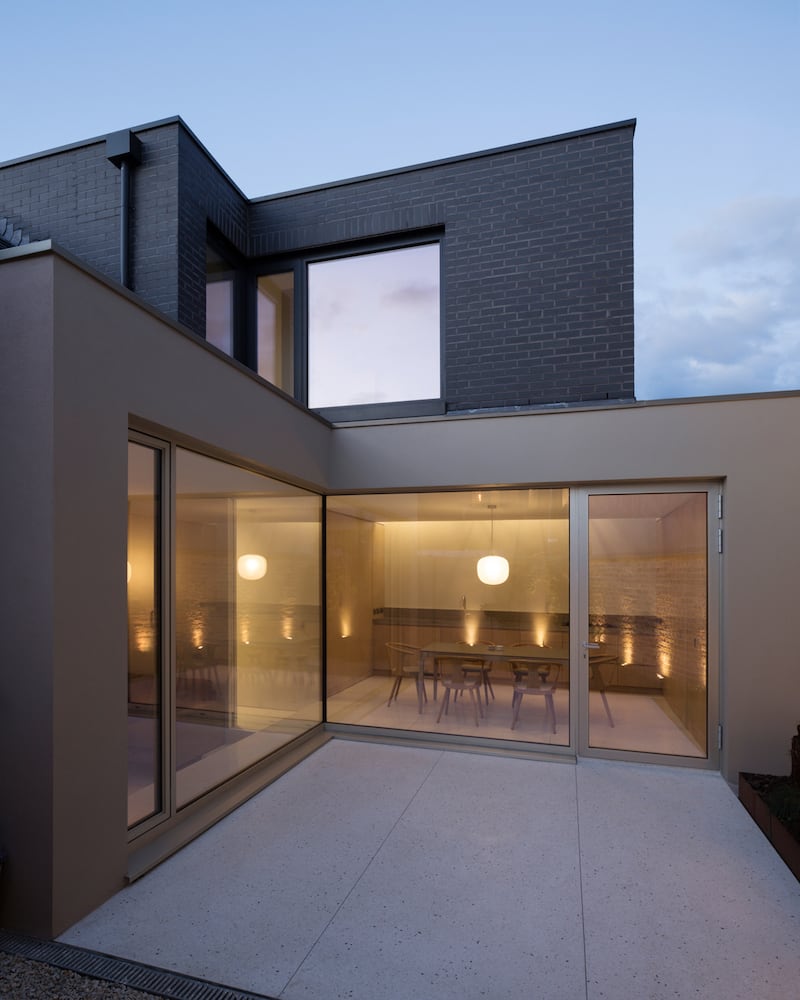
“Everyone wants bifold doors that open up to the outside, but the reality in Ireland is that many days are grey and cold. Oftentimes you’re looking out at the elements, rather than sitting in them. So you want to be able to enjoy the external space while inside. This was the rationale for the recessed seating to the back.”
But before she drafted any plans, she carried out a light analysis on the house to see how the sun falls on the property. “This is critical when adding space to small homes because light makes a space feel more generous. Ceiling heights are another consideration.”
She says her clients’ demands have changed in the pandemic.
“Open plan has waned in popularity. It looks great in photos but isn’t always great to be in. Most now want spaces that can interconnect but that can also be closed off when required. They want spaces with doors.”
Cost wise, this was a complete refurbishment of the existing house and a sizeable new-build extension of almost 60sq m (646sq ft) to give a good-sized two-double-bedroom home. You would need to allow about €3,500 per sq m for such a project, which in a house now of 126sq m amounts to about €440,000. And that’s before you add VAT and design fees. The latter added about €41,000 to the price, and included architect and engineer fees and the use of a quantity surveyor.
Remove the chimney breast
Chimney breasts take up a lot of space in small homes. By removing one in a modest-sized terraced house in Ranelagh, architect Madeleine Moore was able to gain about 90cm of width. This gave her enough room to install a kitchen island cum counter in the middle of the now room, which extends to about six metres. The chimney breast took up 15 per cent of that width.
“By removing it I was able to create a better sense of flow,” she says. To retain the support it had provided, she installed two steel beams and a steel column in its place. She says a structural engineer is essential for this type of work.

Across the city in Dublin 7 in a small double-fronted single-storey artisan cottage, architect David McInerney of Wrkshop removed a chimney breast to bring light into the centre of the house, using the gap left in the roof to fit roof-light.
The move also allowed him to raise the ceiling height up to the pitch. The ceiling around the roof-light is painted a vivid orange, a detail you can see through the small porthole window in the living room.
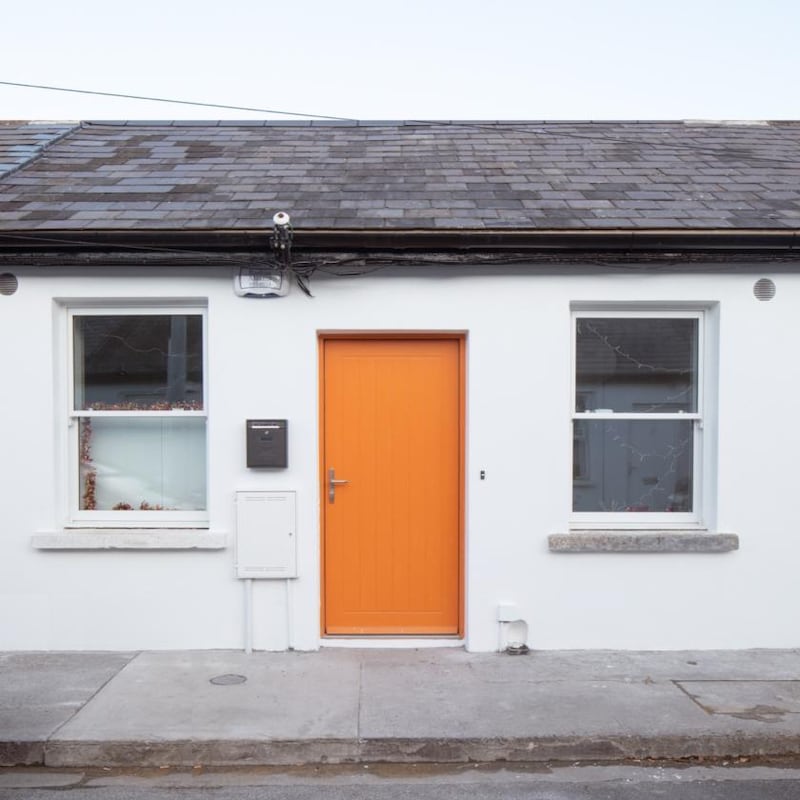
Move the stairs
Staircases and halls can take up a large percentage of floor space and volume within small homes. In some instances, under the guidance of an architect or building engineer, you can move the stairs forward to give you room to the back. In some two-up, two-down terraced houses, this has given enough room to the rear to install a downstairs windowed bathroom.
Kinsale-based Conneely Wessels Architects took the idea several steps further when, in a small terraced house where the stairs cut through the centre of the property, they decided to rehouse it in a roundtower-like return to the back. By moving the staircase out of the original house, it gave its owners full use of the existing floor space, which was about 60sq metres (646sq ft). At its widest the house was only 2.6m across, recalls principal Ronan Conneely. The stairs occupied about a fifth of this space.
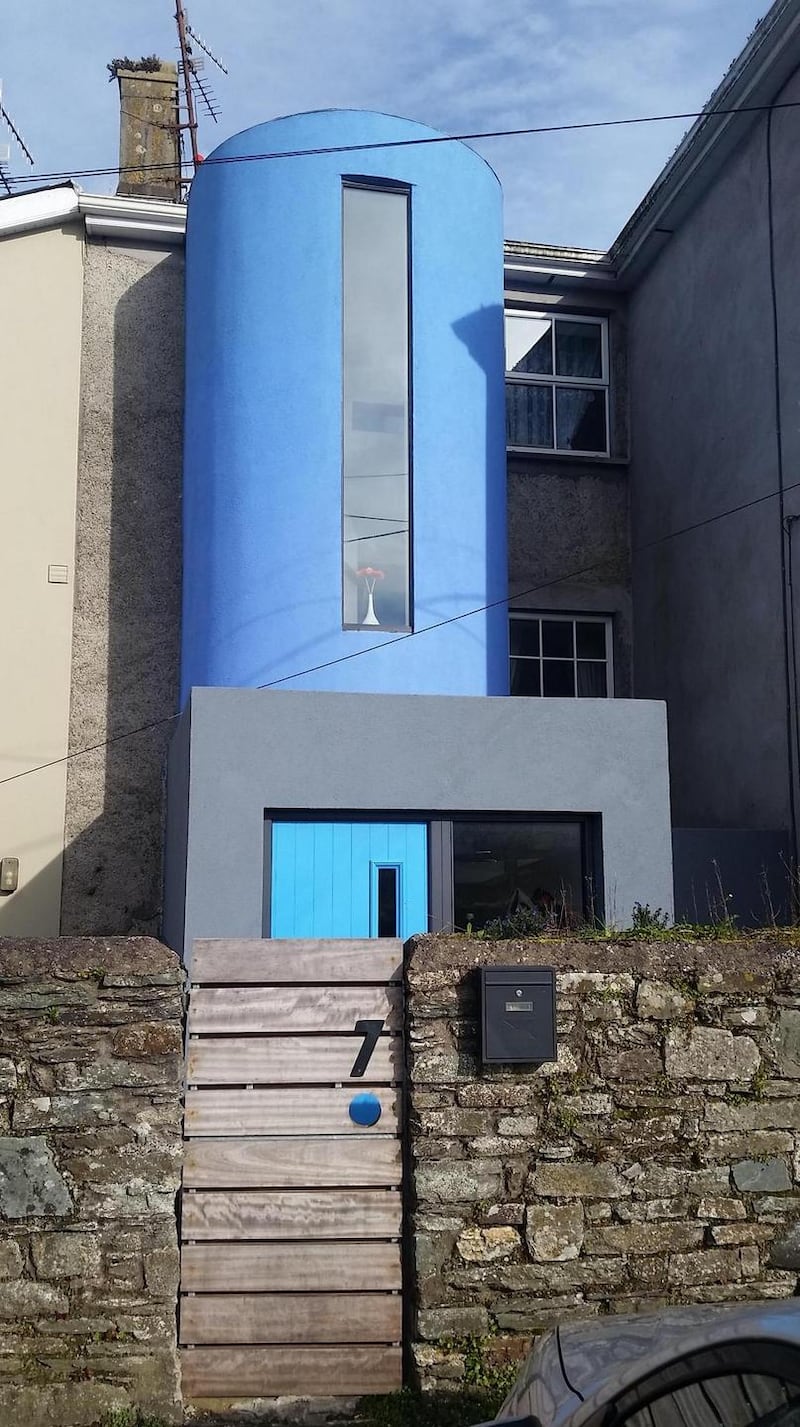
By also flipping the entrance from the front to the back, it gave a better sense of circulation to the three-storey home. The return only extends to about 12 sq m (129sq ft). This job was done a few years ago and required a complete gutting of the property. To do such refurbishment and new build works now would cost from about €160,000, excluding VAT and design fees, he estimates.
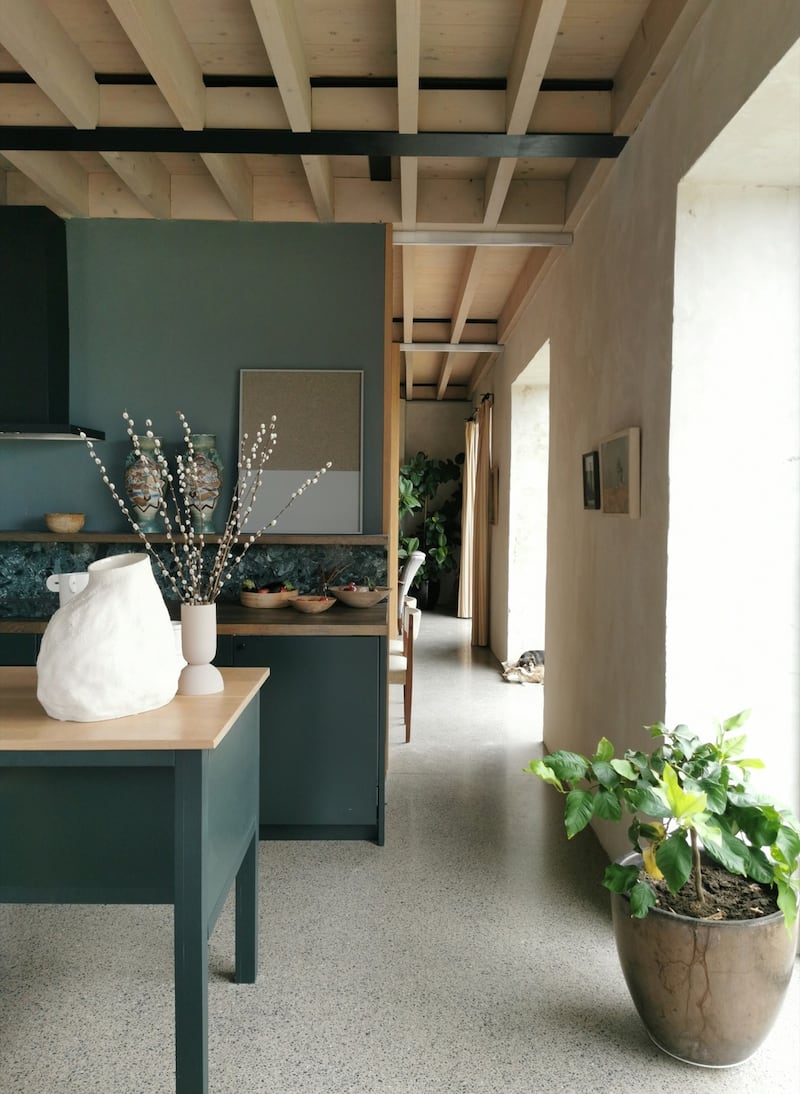
Raise your expectations
You can create the illusion of space with simple but clever tricks, as interior designer Eavan English did on the ground floor of her home in Kanturk, Co Cork, where the floor to ceiling heights extended to 2.8m. She opened up the ceiling, exposing rafters, which she oiled using Rubio Monocoat.
She turned most of the ground floor into a broken plan space so the rooms link one through to the other, divided by half internal walls with full-height door openings on either side of the wall. This draws the eye up, she says. The openings are supported by visible RSJ beams, which are painted black. The door openings have pocket sliding doors so that you can close off one section from another. John Carroll did her polished concrete floor and the units were fabricated by John Glennon. The objects and pots on the counters can all be bought on her web shop, Eedi Studio.












